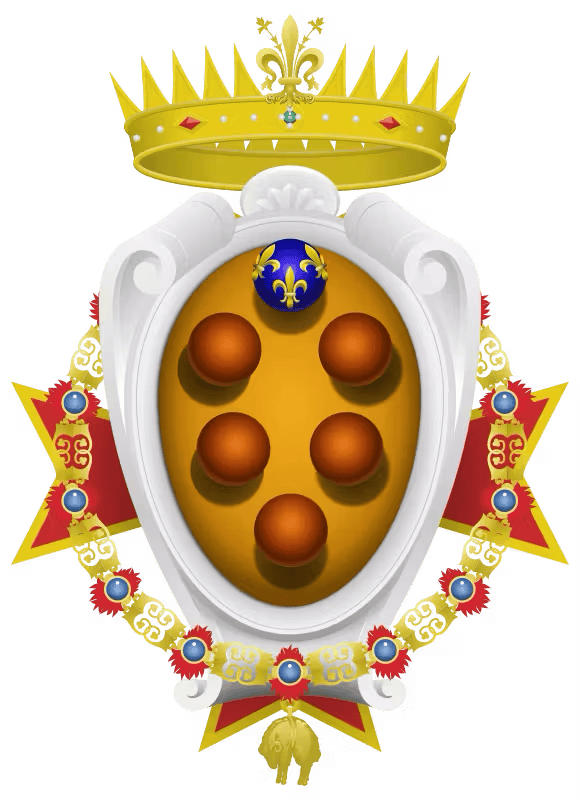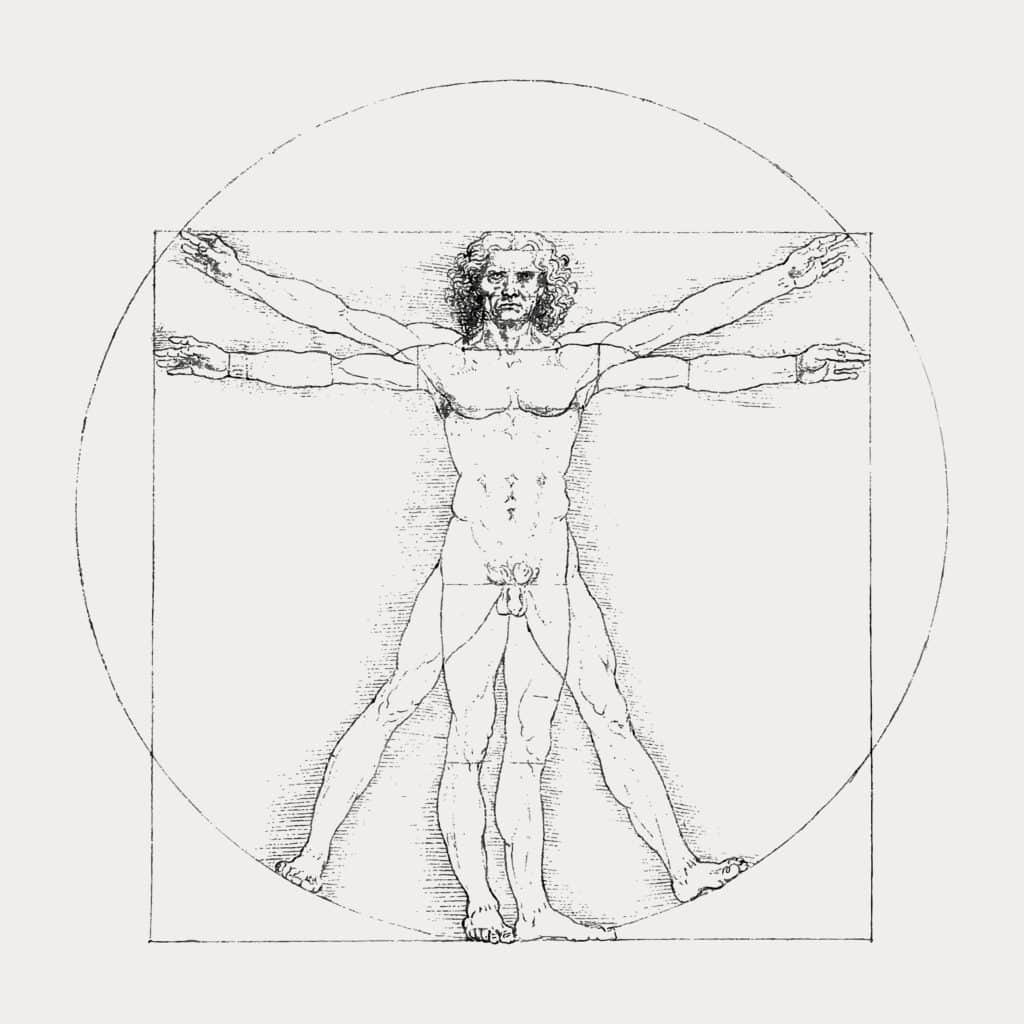The bond between Leonardo da Vinci and Florence is unbreakable and fundamental to understanding the very essence of Genius. Although he was born in the nearby village of Vinci in 1452, it was here that the young Leonardo was artistically and intellectually formed spending some of the most crucial periods of his life (1464–1482 and then again from 1500 to 1506). Florence, at that time shining under the patronage of the Medici and animated by an unparalleled cultural ferment, became his true school.
Here, in the workshop of master Andrea del Verrocchio, he learned painting, sculpture, and engineering, absorbing the spirit of the early Renaissance that would make him the universal artist and scientist we admire today.
Where Leonardo lived and worked in Florence
Walking through the historic center of Florence means treading the same streets where Leonardo conceived his first masterpieces. From the artistic workshops to the laboratories, the city preserves traces of those years of apprenticeship and subsequent maturity, offering wonderful insights for a journey in his footsteps.
Workshop of Verrocchio (Via De’ Macci)
Leonardo entered the famous workshop of Verrocchio, one of the greatest artists of the time, around 1469, as an apprentice. Here he not only learned the basics of art but also came into contact with other future giants of the Renaissance like Botticelli and Perugino.
Curiosities:The legend says that when painting the angel on the left in the Baptism of Christ(now in the Uffizi), Leonardo’s hand was already so superior to that of his master Verrocchio, that the latter, out of shame, decided never to touch the brushes again.
Palazzo Vecchio (Hall of the Grand Council)
During his second Florentine period, Leonardo was engaged in one of his most ambitious and unfortunate commissions.
Curiosities:It was in this room that he was commissioned the grand Battle of Anghiari(1503-1506), a fresco to be contrasted with Michelangelo’s Battle of Cascina. Unfortunately, the mural painting experiment with an innovative technique (a mix of encaustic and oil) failed, and the work remained unfinished and was lost.
Some of Leonardo’s works visible in Florence
Although many of his most famous works (like the Mona Lisa and the Last Supper) are located elsewhere, Florence, and in particular the Uffizi Gallery, offers the unique opportunity to admire the roots of his genius.
The Annunciation
This is one of the first masterpieces attributed to the young Leonardo, a panel painting that breaks with tradition. The scene is set in a Renaissance garden, and the angel and Mary are represented with a surprising naturalness and attention to botanical details.
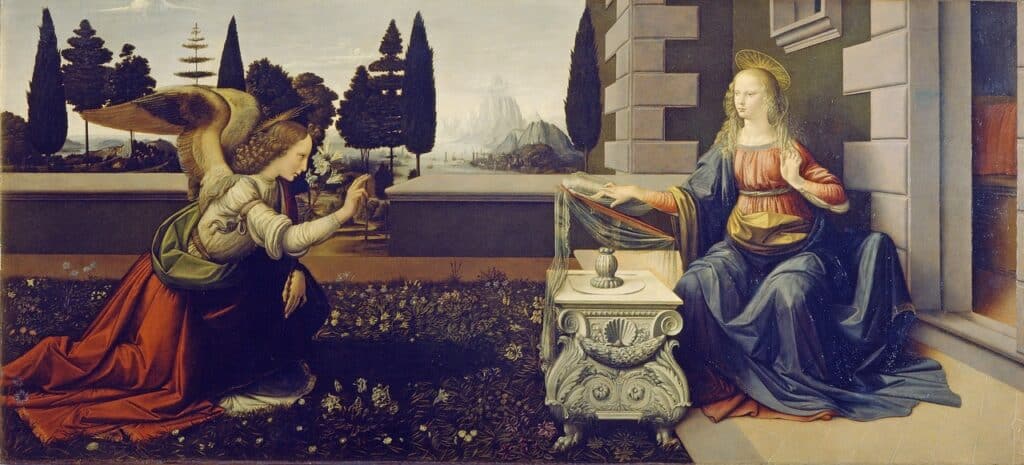
Curiosity: by closely observing the wings of the Angel, one can notice how they are painted with the precision typical of birds studied from life, a clear sign of Leonardo’s early scientific inquiry.
Adoration of the Magi
An unfinished but revolutionary work, created for the monks of San Donato at Scopeto. The panel is a dynamic whirlwind of figures, gestures, and expressions that anticipates his mature style, revealing the entire creative process of the artist.
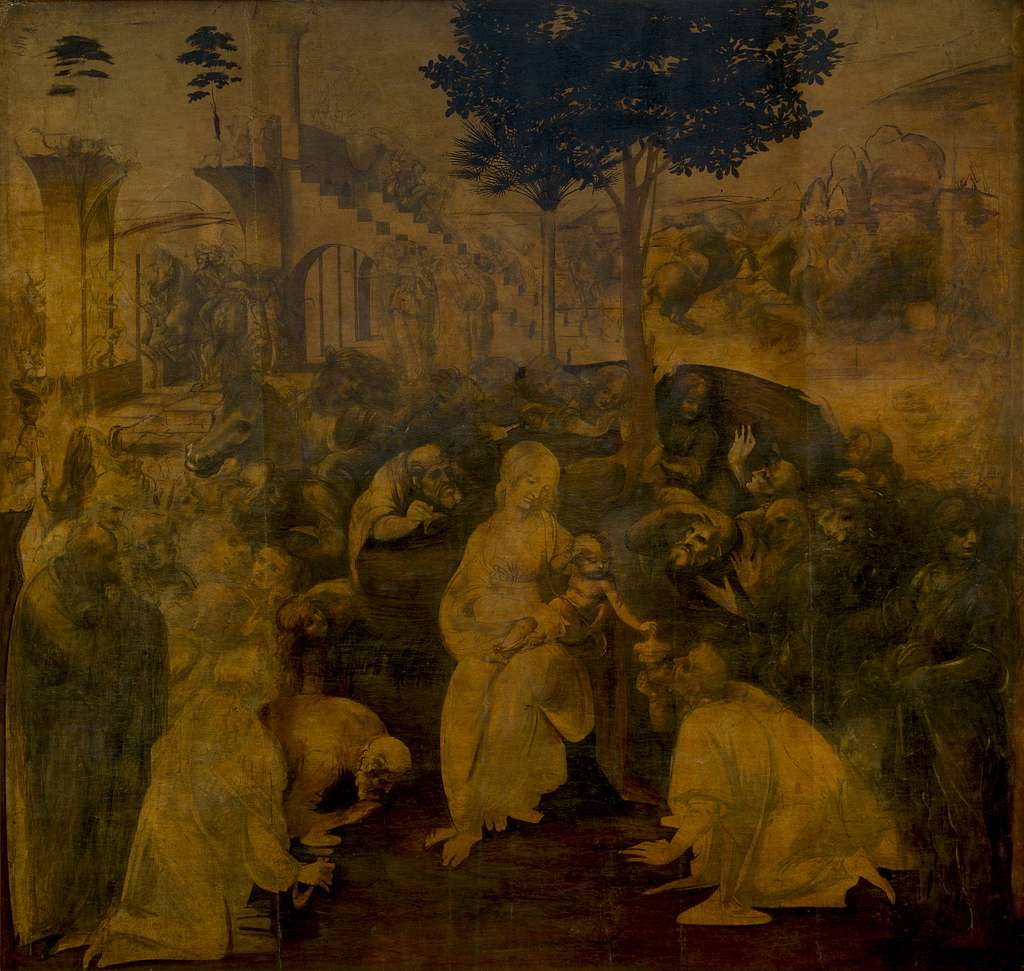
Curiosity: it is precisely thanks to this unfinished work that we can analyze in depth his working method, from the first drafts to the final composition, which remains only at the level of preparatory drawing.
Baptism of Christ (with Verrocchio)
The work with which, according to Vasari, the young Leonardo (then an apprentice) surpassed his master Andrea del Verrocchio by painting the angel on the left and part of the landscape, is now to the Uffizi.
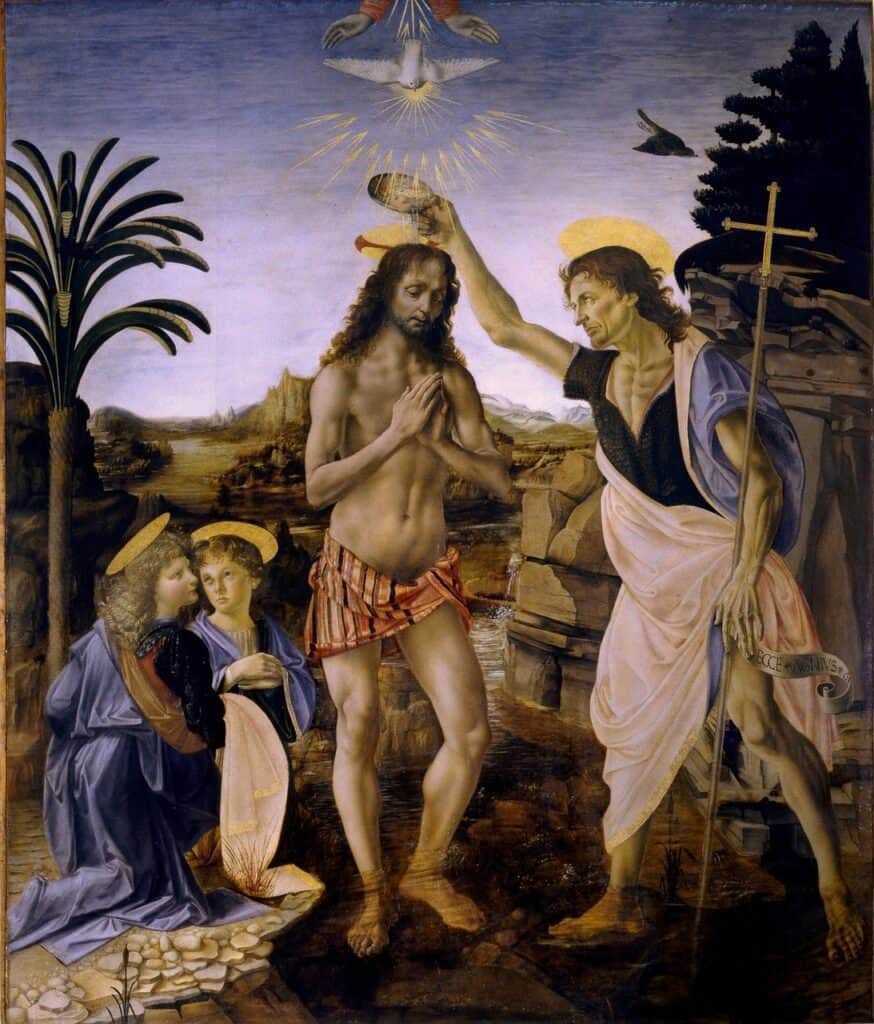
Curiosity: his contribution is visible in the incredibly soft face of the angel and in the use of sfumato that gives an almost ethereal brightness, marking the beginning of his pictorial revolution.
Landscape Study (Drawing 8 P)
Not a painting, but a fundamental drawing from 1473, considered the first dated landscape of Western art. It depicts the Val di Sieve and the castle of Montevarchi, and is located in the Cabinet of Drawings and Prints of the Uffizi.
Curiosity: it is the oldest and direct testimony of Leonardo’s obsessive attention to the nature and geology of the Tuscan landscape.
Leonardian itinerary in Florence: a day on his traces
If you wish to immerse yourself in Leonardo’s Florence, here is a proposal for a cultural tour that will allow you to grasp its essence in a single day, combining history, art, and innovation.
Morning: start the day with an in-depth visit to the Uffizi Gallery to admire his youthful works (Annunciation and Adoration of the Magi). Afterwards, take a short walk on Via de’ Macci(where Verrocchio’s workshop once stood) to experience the environment of his apprenticeship.
Afternoon: continue towards Palazzo Vecchio to see the Hall of the Great Council and imagine the lost grandeur of the Battle of Anghiari. Conclude with a visit to the Leonardo da Vinci Museum on Via dei Servi, which offers working models and reconstructions based on his codes and drawings, a tribute to engineering genius.
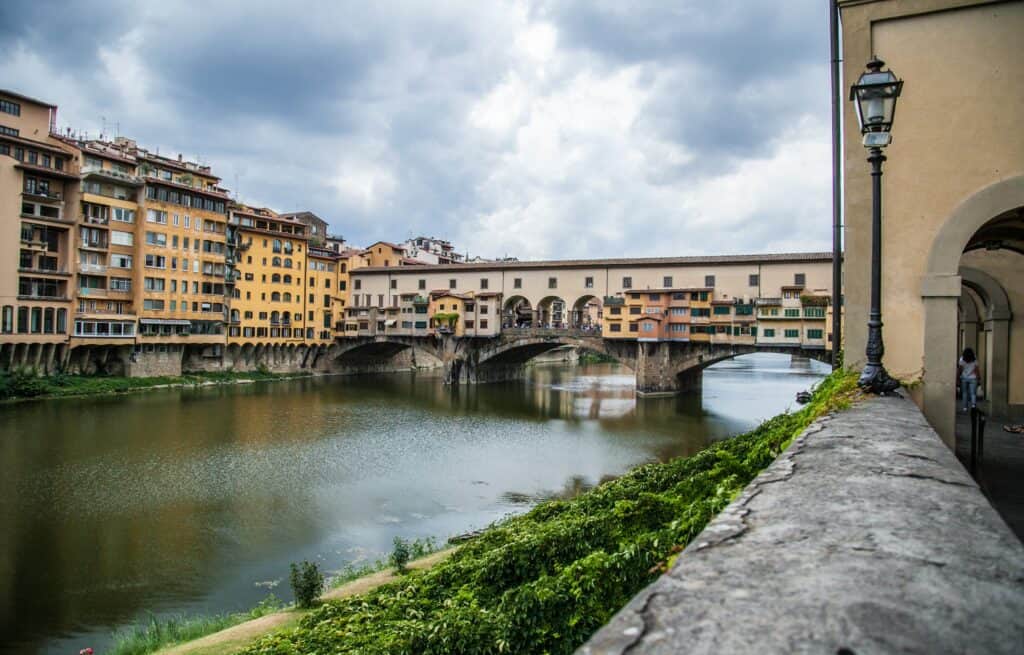
Extra: end with a relaxing walk along the Lungarno in search of commemorative plaques, reflecting on the Arno River. A river that Leonardo studied and for which he designed a diversion project. Further proof of his inexhaustible curiosity.
Curiosities and anecdotes about Leonardo in Florence
To make the story of the Genius more human and engaging, we cannot forget some details that make us smile and reflect. Did you know, for example, that Leonardo was known for his physical strength? He was able to bend horseshoes with his bare hands. But there’s more: he was also a convinced vegetarian(a rare thing for
the time), and he bought caged birds at the market just to free them, a gesture of deep respect for nature that we find
in his drawings and codes. These little anecdotes reveal to us that, behind the universal Genius, there was a man with an incredibly modern sensitivity and ethics.
If you want to experience this journey through art and engineering, contact me to organize a private tour in Florence: I will accompany you to discover the Florence of Leonardo through his eyes as an artist, scientist, and dreamer.
